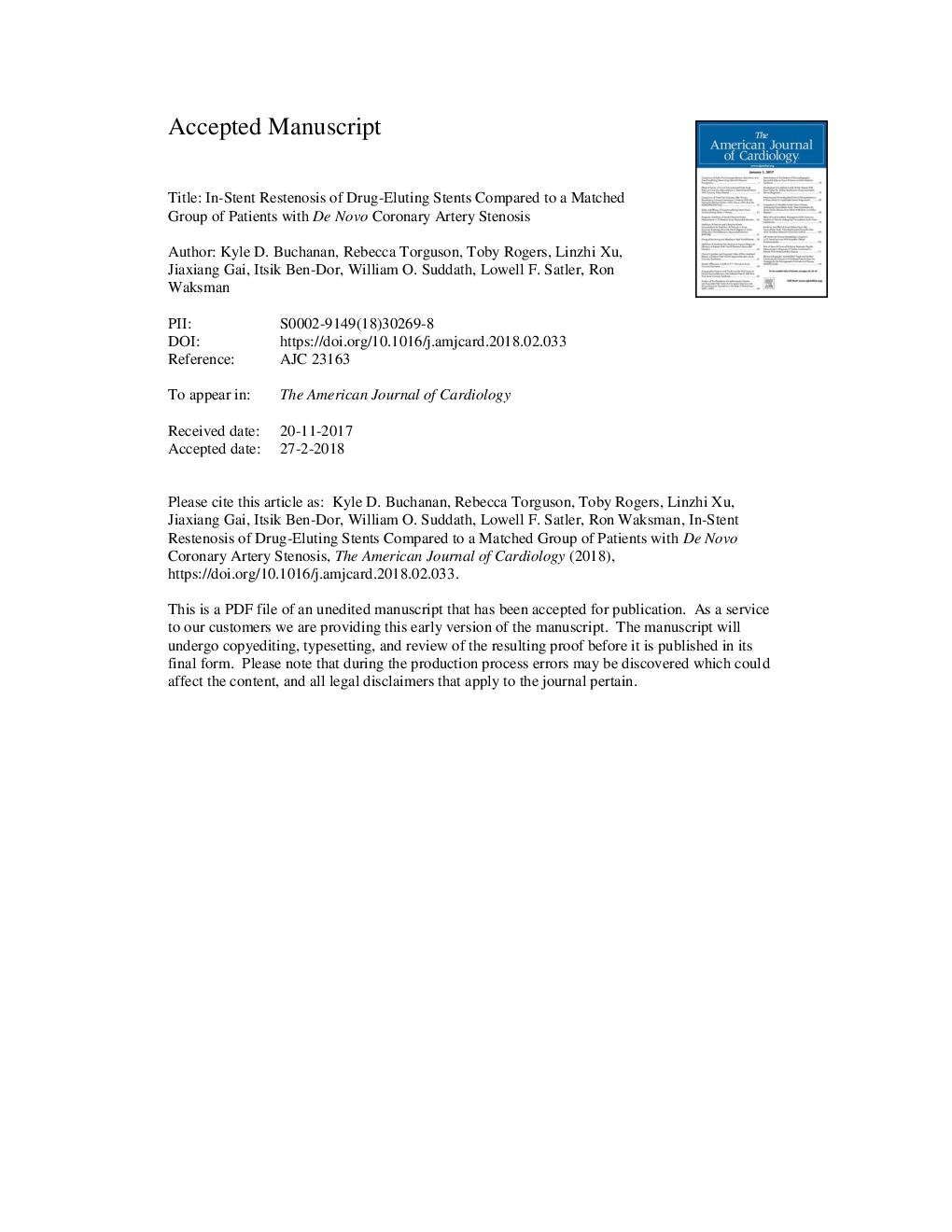| Article ID | Journal | Published Year | Pages | File Type |
|---|---|---|---|---|
| 8651219 | The American Journal of Cardiology | 2018 | 29 Pages |
Abstract
Drug-eluting stents (DES) significantly reduced the incidence of in-stent restenosis (ISR). However, ISR still exists in the contemporary DES era. Previously deemed to be a benign process, ISR leads to complex presentation and intervention. This study aimed to compare the presentation and outcome of DES-ISR versus de novo lesions. We performed a retrospective analysis of 11,666 patients receiving percutaneous coronary intervention from 2003 to 2017 and divided them into 2 groups by de novo stenosis and ISR. They were matched based on common cardiovascular risk factors at a 4:1 ratio, respectively. After matching, a total of 1,888 patients with 3,126 de novo lesions and 472 patients with 508 ISR lesions were analyzed. Patients with ISR presented more often with unstable angina (61% vs 45%, pâ<0.001) and less often with myocardial infarction (6% vs 14%, pâ<0.001). One-year composite major adverse cardiovascular event, defined as death, Q-wave myocardial infarction, and target vessel revascularization, was 10% in the de novo group and 17% in the ISR group (hazard ratio 1.98, 95% confidential interval 1.58 to 2.46, pâ<0.001). After adjusting for myocardial infarction presentation, hazard ratio of major adverse cardiovascular events was still higher for the ISR group at 1 year (2.03, 95% confidential interval 1.62 to 2.55, pâ<0.001). ISR of DES remains a therapeutic challenge and leads to complex presentation and worse outcomes compared with matched de novo patients. These data show that DES-ISR demands better appreciation and prevention with more precise stent technique and should motivate the continued development of fully bioresorbable scaffolds.
Related Topics
Health Sciences
Medicine and Dentistry
Cardiology and Cardiovascular Medicine
Authors
Kyle D. MD, Rebecca MPH, Toby MD, PhD, Linzhi PhD, Jiaxiang MSPH, Itsik MD, William O. MD, Lowell F. MD, Ron MD,
